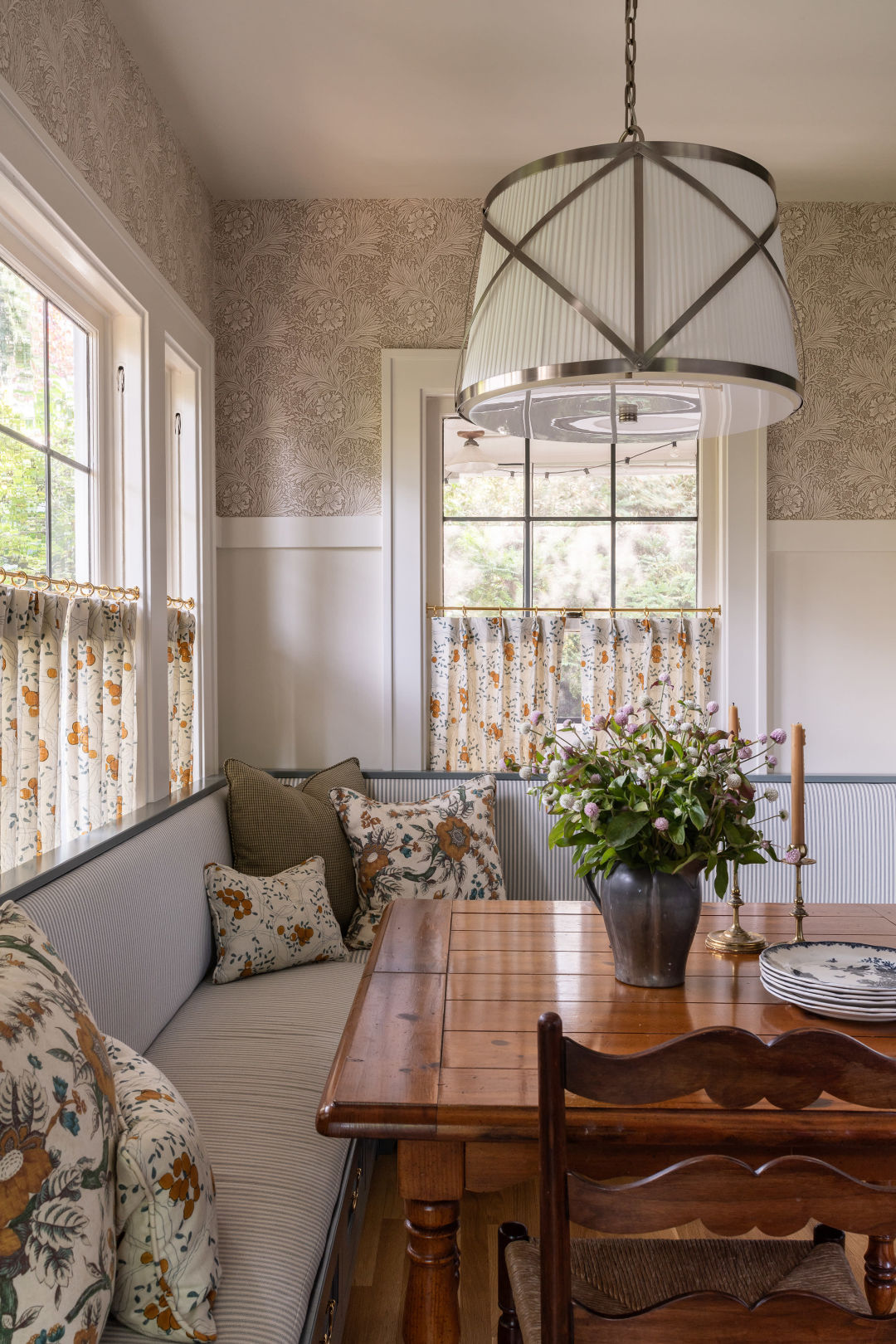A Kitchen Remodel Goes Dutch—but Not Too Much

A custom-blended shade of paint makes cabinets stand out.
As historic Seattle architectural styles go, Dutch Colonial Revival—known for curved eaves that give it the look of an old-fashioned barn—stands in the shadows of big-name stars. It’s no ornate Queen Anne Victorian. It’s no hulking Foursquare or storied Craftsman.
So when Studio Laloc founder and principal designer Lauren Caron took on a kitchen update in a century-old Dutch Colonial Revival on north Capitol Hill, she saw it as a chance to tell a story. Two stories, actually: one about the century-old house, and one about the young family of three that would call it home.
Caron’s work designing new looks for old homes reminds her of an exercise in branding—an uncommon perspective for an interior designer, but unsurprising for a Fashion Institute of Technology grad who spent much of her career designing visuals at luxury department store Bergdorf Goodman. For Caron, capturing the distinct style of a heritage brand (like, say, Chanel) within the framework of Bergdorf’s own centuries-old image feels akin to remodeling a historic home for a modern client. “Their lives and personalities are that brand within the legacy,” she says.

The breakfast nook mixes eras—and prints.
The Master Builders Association of King and Snohomish Counties’ field guide to classic Seattle house styles deems Dutch Colonial Revival “the urban farmhouse of its age.” Any Seattle neighborhood populated by early-twentieth-century architecture probably has at least a few of those distinctive gambrel rooflines. Caron’s clients’ home near Interlaken Park counts classic brick Federal-style homes and charming Tudors among its neighbors, but the Dutch Colonial Revival look is distinctly more pastoral.

A custom hood, originally intended for the designer's own home, tops a fancy induction range.
Caron uses modern takes on timeless farmhouse style judiciously, but it seemed like an apt fit in a home with unfussy lines reminiscent of a barn. An apron-style sink with a brass bridge faucet lends a touch of practical charm. In the breakfast nook, ticking stripe bench cushions and mixed floral fabrics feel bucolic, not twee; walnut-colored rush chairs pair well with a lighter dining table and oak floors thanks to their shared warm undertones. She also incorporated Netherlands-inspired elements, like Dutch blue cabinets (a custom mix based on Farrow and Ball’s De Nimes hue) and multidimensional white tiles, a handwrought look from Fireclay inspired by her travels in Amsterdam.
But the designer didn’t set out to create a house museum with exclusively era-appropriate trappings. “No one actually lived like that,” says Caron: The original owners of the home likely furnished it with their parents’ mission chairs or their grandparents’ Victorian armoire. Likewise, a 1950’s wood dining table that’s vintage, but “not too precious,” will happily play host to homework nights and messy family meals (alongside the built-in bench, purpose-made to ward off wayward crumbs). Adding newer elements designed for the home’s current owners, rather than its historic heritage, helps the home feel paradoxically more authentic, not less.

Designer Lauren Caron uses farmhouse style sparingly.
Though she ensconced almost all the appliances in cabinetry for a uniform look, Caron let the ultra-modern, energy-efficient Bertazzoni induction range take center stage. It’s topped by a traditional architectural hood she originally custom-designed for her own kitchen and combo that represents Caron’s design ethos: “You have this real strong feeling of connection to the past,” she says. “And then we'll try to mix it up so that it doesn't feel like a time capsule.”




